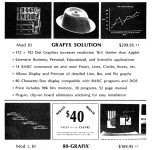danielbooneamerica
Experienced Member
Kind of like this.You can, just poke twice.
You can poke 8, 16, 32 or any length of bits you want. As programmer its your responsibilty to convert number to binary then poke in memory (in order).
Most BASIC programming examples include 16 bit conversion routine, if you cannot find one lmk and I will dig out an example.
Z=65534
GOSUB 10000 :rem Convert number.
POKE address,L :rem Poke low byte.
POKE address+1,H :rem Poke high byte.
end
1000 rem Call me when you want to convert Z to L (low byte) H (high byte).
H=int(Z/256)
L=Z-(H*256)
return
Last edited:


